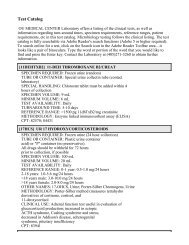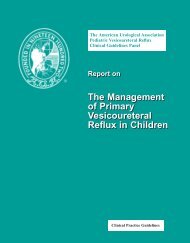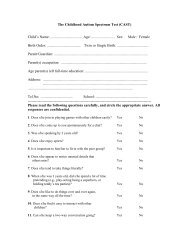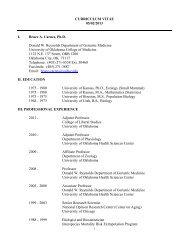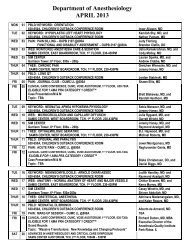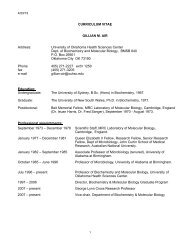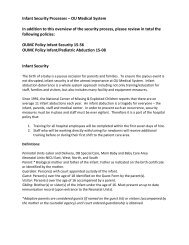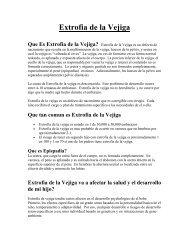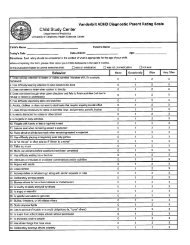Communities Advancing Resilience Toolkit (CART ... - OU Medicine
Communities Advancing Resilience Toolkit (CART ... - OU Medicine
Communities Advancing Resilience Toolkit (CART ... - OU Medicine
You also want an ePaper? Increase the reach of your titles
YUMPU automatically turns print PDFs into web optimized ePapers that Google loves.
you administer the <strong>CART</strong> survey with participants before they take part in a community<br />
conversation.<br />
Instructions/Guidelines<br />
Step 1: Clarify the purpose of your conversations. Community conversations should have<br />
a purpose which you need to clarify for yourself and your participants. Be sure you know<br />
why you are conducting conversations and what you intend to do with the information<br />
gathered. Stay focused on your purpose as you develop questions and a structured guide,<br />
identify participants, and facilitate and analyze the conversation.<br />
Step 2: Prepare questions. Review the available <strong>CART</strong> questions and conduct background<br />
research to augment them if necessary. Select, write, and edit questions to enable you to<br />
gather the information you are seeking. Questions should be neutral, specific, openended,<br />
and clearly worded. Avoid leading questions in which you imply an expected<br />
answer within the question.<br />
Step 3: Create a structured guide. The discussion should begin with broad questions that<br />
get more specific as the session continues, relying on probes rather than leading<br />
questions. Create a structured guide to keep the session on track and within time limits<br />
(typically 1 to 3 hours). The structured guide should be based on the information to be<br />
collected.<br />
Step 4: Select and recruit participants. The optimal number of participants is 6 to 12.<br />
When there are too few participants, information usually is not as rich or deep.<br />
With too many participants, you may find it more difficult to stay within<br />
time limits and there is an increased risk that some will not<br />
participate. Participants should be selected because they have<br />
knowledge about the specific topic or issue to be discussed.<br />
Participants typically are similar in some ways though there may<br />
be important differences as well. For <strong>CART</strong> conversations,<br />
participants should be recruited within a community or within or<br />
among community groups. For example, a conversation might involve representatives of<br />
various sectors (e.g., education, emergency management, health, local leadership, or<br />
media), organizations, or roles in the community. Alternatively, members may be selected<br />
<strong>Communities</strong> <strong>Advancing</strong> <strong>Resilience</strong> <strong>Toolkit</strong> (<strong>CART</strong>) Page 24



